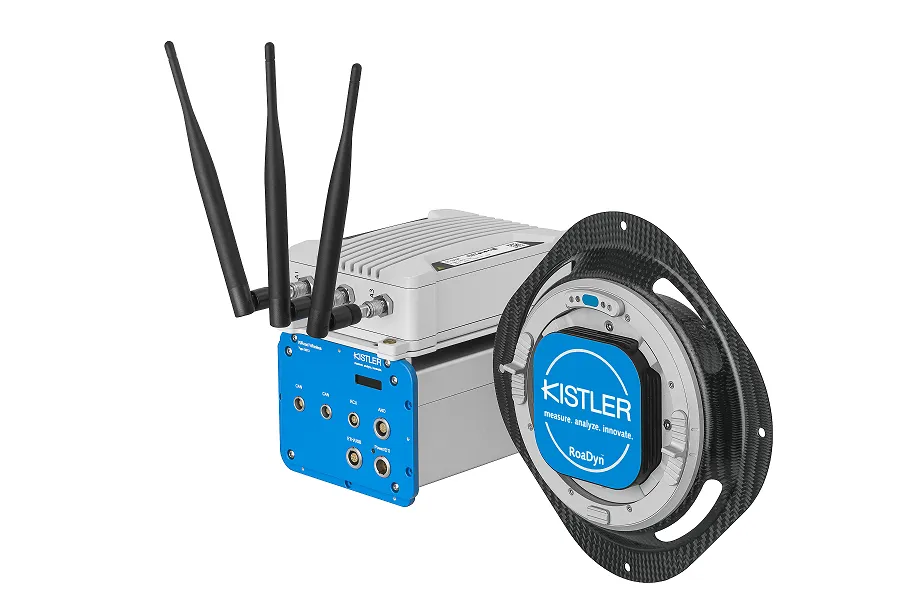
Kistler is launching a wireless wheel force measurement system which it says will reduce the effort involved in vehicle dynamics, durability and tyre testing.
The new KiRoad Wireless HDR (high data rate) features far-field telemetry compliant with the 2.4 GHz WLAN standard, and it can be used with existing RoaDyn wheel force transducers (WFT).
Vehicle developers use WFTs to measure wheel forces and moments directly on the hub, yielding data that is critical for durability tests. These measurements are also used to evaluate vehicle dynamics and characterize tyre performance.
WFTs in the RoaDyn series were the first systems that used near-field telemetry to transmit data to the vehicle, the company adds.
The KiRoad Wireless HDR features remote wireless transmission for wheel force measurements, which Kistler insists eliminates the need for time-consuming adaptations and cabling both inside and outside the vehicle.
According to Kistler, automobile and tyre manufacturers, suppliers to the automotive industry, research institutions and motorsport teams are among the users who will benefit from reduced installation effort and easy operation – freeing up time for over the road and on-track testing.
This modular system consists of three components that are compatible with the 6-component wheel force transducers from Kistler: the onboard unit (electronics), the wheel unit and the rotary encoder.
Key features of KiRoad Wireless HDR include data transmission via WLAN (wireless standard: IEEE 802.11n), replaceable battery pack with minimum capacity of 4 hours at –20°C for winter tests and system configuration and visualisation of measurement results in KiCenter software or browser.
Kistler claims a new rotary encoder concept used with the KiRoad Wireless HDR eliminates the need to attach any equipment to the outside of the vehicle.
The wheel unit, with its integrated calculation and transmitter unit, is waterproof and is easy to install and remove, thereby minimising set-up time for the test engineer.
All RoaDyn WFTs that are currently in operation can be equipped with KiRoad Wireless HDR, giving customers the benefits of a cable-free measuring system for all 6-component WFTs.
They can measure all forces and moments on the wheel in each of the three spatial directions as well as wheel angle and angular speed.









